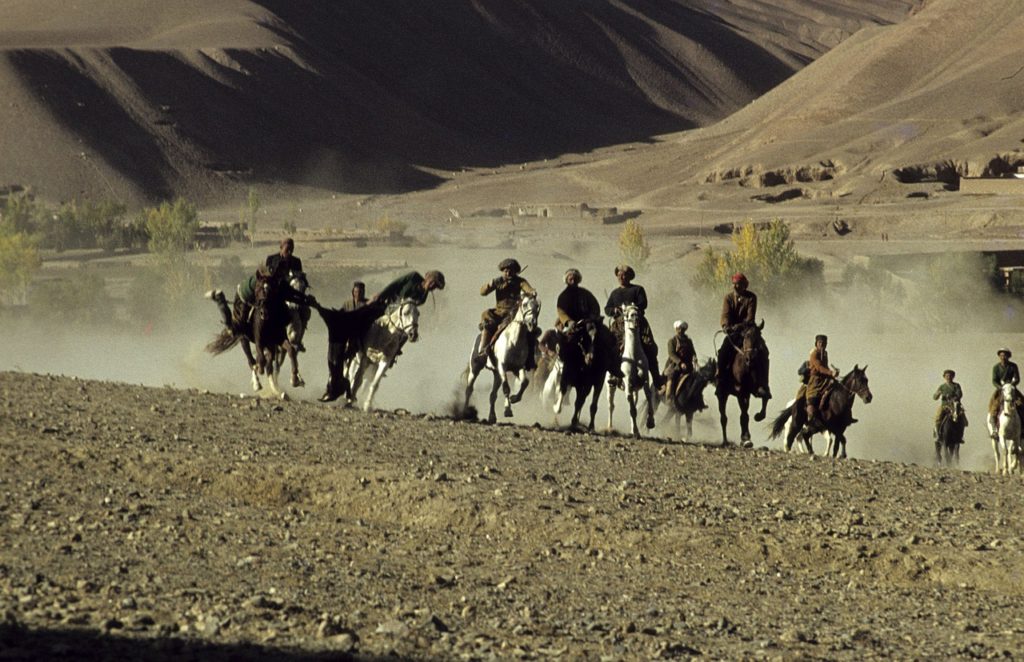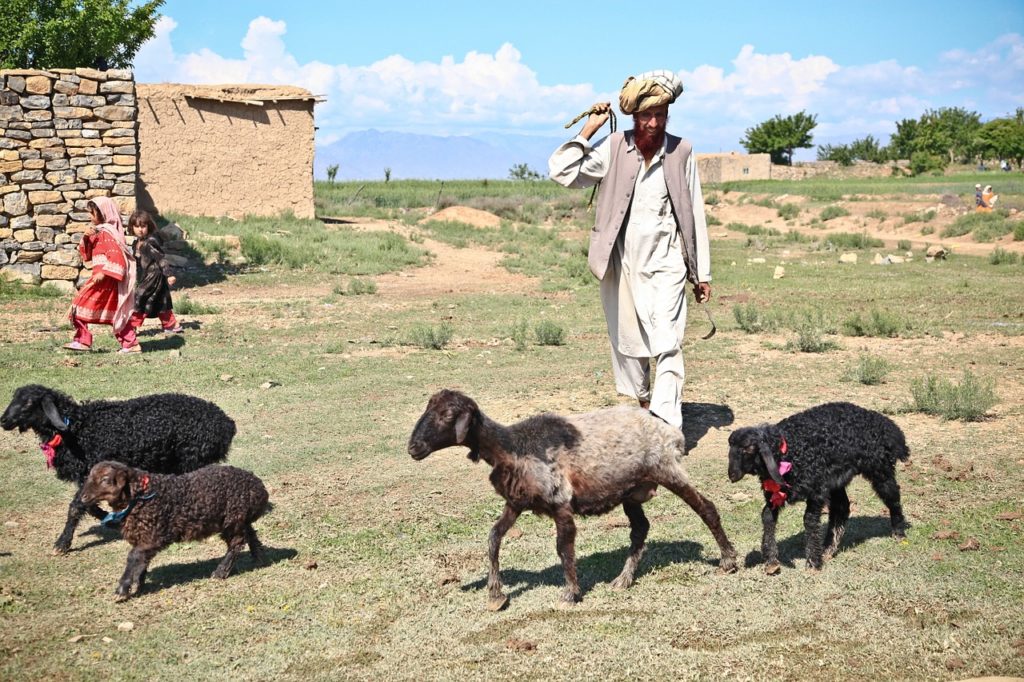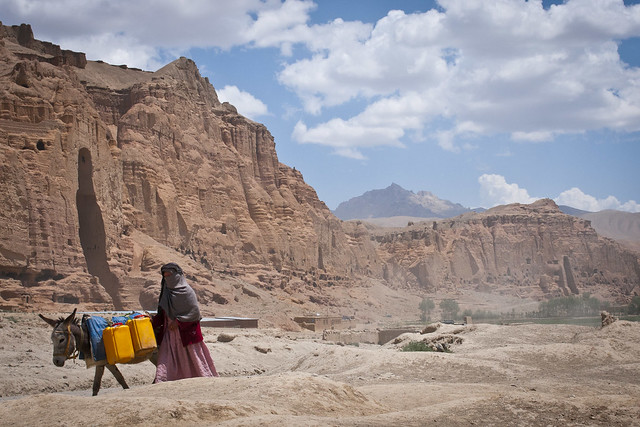In this article, we look at 10 interesting facts about Afghanistan, its culture, and its people—from the country’s love of poetry to the national sport of buzkashi.
1. Afghanistan’s capital city is Kabul.
Kabul, Afghanistan’s largest city, is located in the country’s eastern section. The only city in Afghanistan with a population of more than 1 million, Kabul is home to around 4.114 million people.
Nestled in a valley of the expansive Hindu Kush mountains, Kabul’s elevation of approximately 1,790 meters makes the city one of the world’s highest capitals. First mentioned around the era of the Achaemenid Empire, the city of Kabul is said to date back more than 3,500 years.
2. The national sport of Afghanistan is buzkashi.
Afghans have petitioned for buzkashi, known as the world’s wildest sport, to be recognized as an Olympic sport.

Buzkashi, or goat-grabbing, involves horseback riders grabbing at a goat carcass, galloping clear of their rivals, and dropping it within a chalked circle. The game has been played on the northern steppe for centuries, and was once the sport of rich rival warlords. Today, it is largely funded by mobile telecoms companies and private airlines.
3. Alexander the Great’s wife, Roxana, was born in Afghanistan.
She was described as one of the most beautiful women in the whole of Asia. Roxana’s Afghan name, Roshanak, means “little star” in Persian.
Although Alexander the Great’s marriage to Roxana was politically motivated, it is widely noted that she was his greatest weakness. Married in 327 BC, Alexander was so charmed by Roxana’s beauty and wisdom that the couple were inseparable, much to the annoyance of some of his soldiers.
Following Alexander the Great’s death in 323 BC, Roxana gave birth to Alexander IV. She was murdered in Macedonia in 320 BC by Alexander’s former ally.
4. Approximately 90 percent of the Afghan population has mobile coverage.
After the Karzai administration gained office in 2001, Afghanistan’s Ministry of Communications and Information Technology rapidly expanded the country’s wireless, internet, radio, and television industries.

In 2006, the Afghan government signed an agreement with ZTE of China, striking a deal worth a reported $64.5 million. Under the agreement, ZTE would lay the country’s optical fiber cable, improving telephone, internet, radio, and television services throughout Afghanistan.
By 2014, approximately 90 percent of Afghans had access to communication services. Today, Afghan Wireless keeps Afghanistan connected, providing unparalleled speed, freedom, and reliability.
5. Poetry is an integral part of Afghan culture.
Afghans have been telling tales in verse for more than a millennium. In the western city of Herat, locals celebrate “poetry night” every Thursday, with men, women, and children gathering together to share both modern and ancient verse, enjoying traditional Herati music, and indulging in pastries and sweet tea well into the evening.
6. Afghanistan is a landlocked South Asian nation.
The country is bordered by Iran to the west; India and China to the east; Uzbekistan, Turkmenistan, and Tajikistan to the north; and Pakistan to the south. The terrain is dominated by rugged mountains, with flat plains in the north and southwest.
7. The country is twice the size of the UK, but has half its population.
Afghanistan’s current population is estimated at almost 39 million. The majority of Afghans live in rural locations within tribal and kinship groups. Approximately 10 percent of Afghans live in Kabul. The nation’s second largest city is Kandahar, with just under 400,000 residents.
8. Afghanistan is semi-arid, with hot summers and cold winters.

Afghanistan has a dry continental climate, comprising all four seasons. In Afghanistan’s lowlands, temperatures can peak at 50⁰C in the height of summer, dropping to around 20⁰C in the wintertime. In mountain regions, winter temperatures often fall as low as -25⁰C, with some isolated areas dropping considerably lower than this.
9. Afghans celebrate the new year on March 21.
The Afghan new year is marked by celebrations lasting around 2 weeks, culminating in Nauruz, or Farmer’s Day, which is celebrated on March 21.
In the city of Mazar-i-Shar, the Red Flower Festival forms an integral part of the new year festivities, celebrating the blaze of red tulips growing on plains surrounding the city.
In Mazar, up to 200,000 Afghans gather for Jahenda Bala on the first day of the new year. High ranking officials gather for a religious ceremony at the Blue Mosque, the site of the tomb of the 4th Calif of Islam, Ali ibn Abi Talib.
10. Agriculture is big business in Afghanistan.
Afghanistan is self-sufficient in terms of around 95 percent of its rye and wheat supply. The country’s agricultural sector more than meets the country’s needs for potatoes and rice. Agriculture accounts for around 23 percent of Afghanistan’s GDP and 44 percent of the country’s labor force.
Afghanistan produces around 1.5 million tons of fresh fruit every year, and experts predict this sector could expand significantly in years to come. The country is gaining a reputation for producing some of the world’s finest grapes, cherries, apricots, melons, peaches, and figs.

